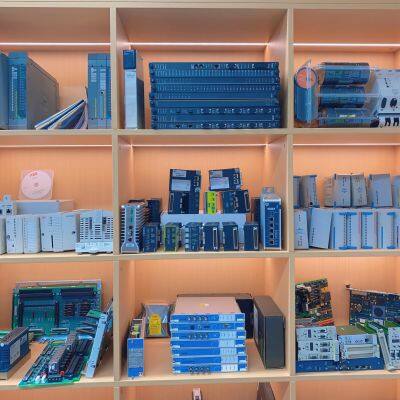Product Description
TRICONEX Series Module -2
I. Overview
As a key industrial control component, the TRICONEX 7400213-100 plays an extremely important role in complex and harsh industrial automation scenarios. Within TRICONEX's advanced system architecture, it undertakes core tasks such as digital signal processing and data communication transfer, serving as a crucial link to ensure the efficient and stable operation of industrial control systems. It is originally designed to meet the strict requirements of various industrial fields for precise control, reliable data interaction, and strong environmental adaptability.
In the oil and gas industry, the operation of the entire industrial chain—from oil and gas wellhead extraction facilities, to long-distance pipeline transportation, and to complex refining and chemical plants—cannot do without stable and precise control. The 7400213-100 can quickly and accurately process signals from various sensors in these challenging environments, providing real-time and reliable data support for automated control systems. This ensures that every step of the production process is under strict monitoring and precise control, effectively avoiding safety accidents and production interruptions caused by control errors. In the power generation industry, whether it is traditional thermal power generation, hydropower generation, or emerging wind and solar power generation, the stable operation and efficient control of power generation equipment are crucial to the stability of power supply. This module can efficiently coordinate various control signals, ensure the stable operation of power generation equipment, maximize and optimize power production, while ensuring that the quality of power output meets strict standards.
II. Core Features
(1) High-Efficiency Digital Signal Processing Capability
The 7400213-100 possesses powerful digital signal processing performance, capable of analyzing, computing, and processing input digital signals at an extremely fast speed. It adopts an advanced hardware architecture and efficient algorithms, enabling it to quickly complete complex operations such as signal filtering, feature extraction, and data decoding. In industrial sites, a large number of sensors generate massive amounts of raw data. This module can quickly filter and process this data, extract valuable information for the control system, and provide a strong basis for subsequent decision-making and the generation of control commands. For example, in automated production lines for automobile manufacturing, various detection sensors feedback real-time equipment operation status and product quality data. The 7400213-100 can quickly process these signals, helping the control system adjust production parameters in a timely manner to ensure consistent product quality and production efficiency.
(2) Flexible and Diverse Communication Interfaces
This module is equipped with rich and flexible communication interfaces, supporting a variety of common industrial communication protocols such as Ethernet/IP and DeviceNet. This allows it to easily achieve seamless communication connections with equipment of different brands and types—whether it is the upper-level monitoring system, or various lower-level actuators and sensors, all can achieve efficient data interaction with it. In a large-scale smart factory, equipment from multiple suppliers may be integrated. Relying on its flexible communication interfaces, the 7400213-100 can quickly adapt and integrate into the factory's communication network, realizing interconnection and collaborative work between devices, and greatly improving the integration and intelligence level of the industrial system.
(3) Outstanding Reliability and Stability
In terms of design, the 7400213-100 fully takes into account the complexity and harshness of the industrial environment, adopting high-reliability components and advanced circuit design. It has excellent anti-interference ability, which can effectively resist adverse factors such as electromagnetic interference and power fluctuations from industrial sites, ensuring the stability of signal processing and communication. At the same time, this module has undergone strict quality inspection and reliability testing, and can still operate stably in harsh environments such as high temperature, high humidity, and high dust. In steel smelters, the environment with high temperature and strong electromagnetic interference poses a great test to the reliability of equipment. The 7400213-100 can work continuously and stably in such an environment, providing reliable guarantee for the automated control of steel production equipment.
(4) Convenient Modular Design
Adopting the modular design concept, the 7400213-100 brings great convenience to the installation, maintenance, and upgrading of industrial systems. During installation, technicians can quickly install it in a suitable location according to actual needs, without complex wiring and debugging work. During the equipment maintenance phase, if the module fails, the faulty module can be directly replaced without large-scale disassembly and reconfiguration of the entire system, which greatly shortens the maintenance time and reduces maintenance costs. When the industrial system needs to be upgraded or its functions expanded, relevant modules can also be easily added or replaced to achieve flexible system upgrading and meet the ever-changing production needs.

III. Technical Specifications
(1) Dimensions and Weight
The device has a compact external dimension design, with dimensions of 139mm × 125mm × 96mm (length × width × height). This small size allows it to flexibly adapt to various industrial control cabinets or internal equipment spaces with limited space—whether in a narrow distribution box or inside a large-scale equipment with a complex structure, a suitable installation location can be easily found. Its weight is relatively light, only [specific weight, which can refer to 723g or other reasonable values in the material]. This greatly reduces labor costs and operation difficulty during equipment installation and transportation, and facilitates technicians to carry out operations such as installation, debugging, and maintenance.
(2) Power Consumption
Under normal working conditions, the 7400213-100 has low power consumption, usually less than 5W. The low-power design not only helps reduce the energy consumption cost of industrial enterprises and conforms to the current development trend of energy conservation and emission reduction, but also reduces the heat generation during equipment operation. In some industrial fields with extremely high requirements for energy efficiency, such as semiconductor manufacturing and precision electronic processing industries, the low-power 7400213-100 can effectively reduce overall energy consumption, while reducing the risk of equipment performance degradation and failure caused by heat generation, and improving the stability and service life of the equipment.
(3) Operating Temperature Range
It has a wide operating temperature adaptation range, from -40℃ to +70℃. This enables it to operate stably in various extreme temperature environments—whether in oil extraction facilities in the cold Arctic region, chemical plants in hot desert areas, or wind farms in plateau areas with large day-night temperature differences, the 7400213-100 can always maintain excellent performance without being affected by fluctuations in the ambient temperature. It ensures the reliable operation of the industrial control system and provides a solid guarantee for the continuity of industrial production.
IV. Functions and Working Principles
(1) Signal Processing Process
When the 7400213-100 is in operation, it first receives digital signals from various sensors or other equipment through its specific input interfaces. These signals may include equipment operation status information, process parameter data, etc. The high-speed processor inside the module starts immediately, and preprocesses these raw signals according to preset algorithms and programs—such as removing noise interference and correcting signal deviations—to improve the quality and accuracy of the signals. Subsequently, in-depth signal analysis and processing are carried out; for example, spectrum analysis of the signals is performed through algorithms such as Fourier transform, feature parameters of the signals are extracted, and whether the operation status of the equipment is normal is judged. The processed signal results are stored in the internal high-speed cache, waiting to be called by the control system later, providing a data basis for the operation control and fault diagnosis of industrial equipment.
(2) Communication and Data Interaction Mechanism
In terms of communication, the 7400213-100 establishes communication connections with external equipment according to the supported communication protocols. When data needs to be sent, it packages and encapsulates the processed and organized data in the format specified by the corresponding communication protocol, and then sends it out through the corresponding communication interface. For example, if the equipment operation status data needs to be transmitted to the upper-level monitoring system, it encapsulates the data into data packets specified by the Ethernet/IP protocol and sends them to the monitoring system through the Ethernet interface. When receiving data, the module monitors the communication interface in real time; once a data packet conforming to the protocol format is received, it immediately performs unpacking processing, extracts valid data, and transmits it to the internal processing unit for further processing or storage. Throughout the communication process, the module continuously monitors the status of the communication link; if communication anomalies such as data loss or transmission errors are detected, it immediately takes measures such as retransmitting data and re-establishing connections to ensure the reliability and stability of data communication, and guarantee the smooth data interaction between various devices in the industrial control system.


Bently Nevada 3500/15-05-05-00 power module
Triconex 3009 processor module
ABB GFD563A102 3BHE046836R0102 Excitation Convection Interface Module
ABB PPD117A3011 3BHE030410R3011 Excitation Controller
ABB PCD231B101 3BHE025541R0101 Excitation Unit Controller
ABB 5SHY3545L0010 3BHE009681R0101 High-Voltage Thyristor Module
ABB PCD230A 3BHE022291R0101 Controller Module
ABB 5SHY3545L0009 3BHB013085R0001 IGBT Module
Bently Nevada 3500/25 enhanced key phase module
Bently Nevada 3500/32 4-channel relay module
ABB PCD232A 3BHE022293R0101 Exciter Control Module
Bently Nevada 3500 monitoring system series modules
 yezi
Hi there! Welcome to my shop. Let me know if you have any questions.
yezi
Hi there! Welcome to my shop. Let me know if you have any questions.



